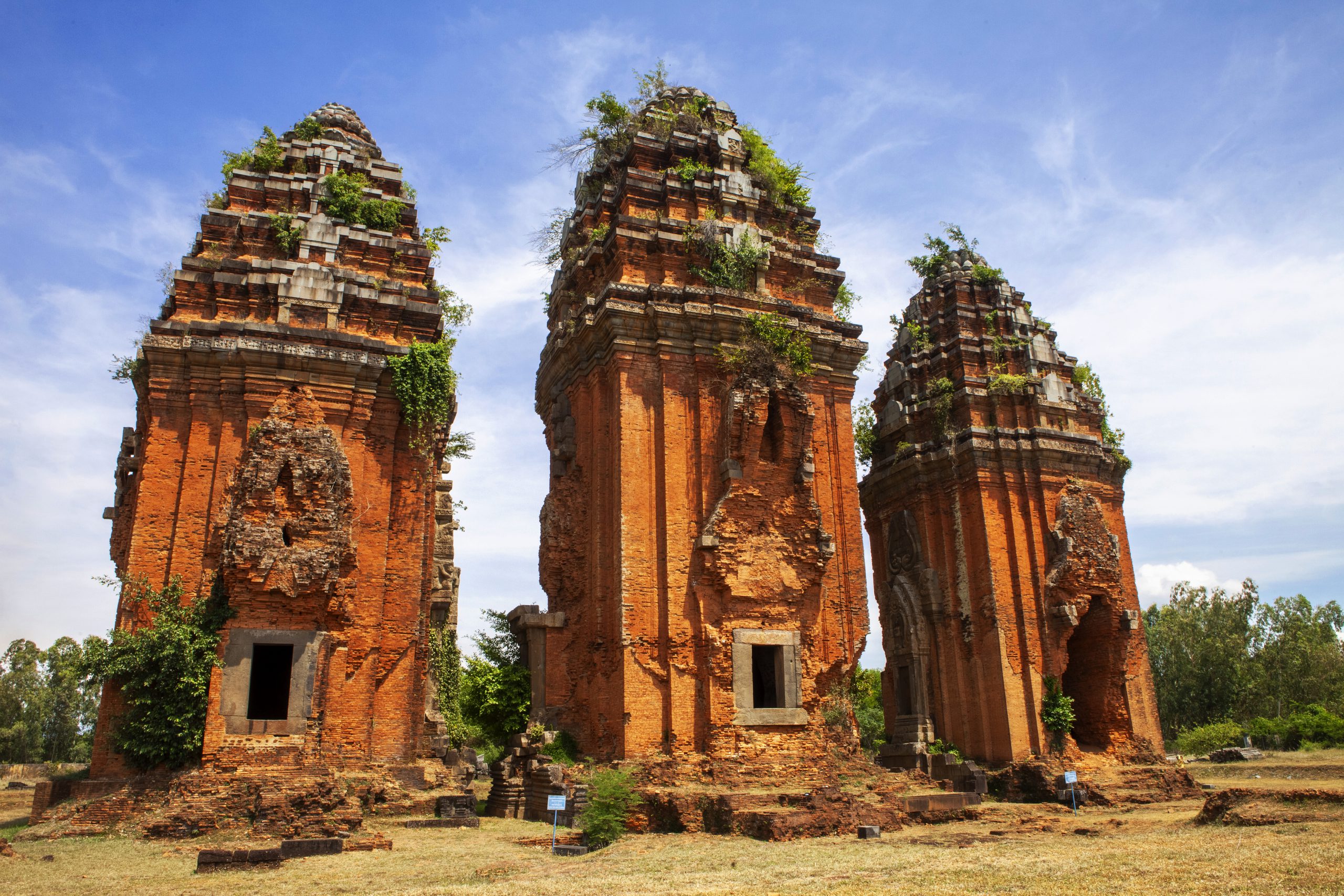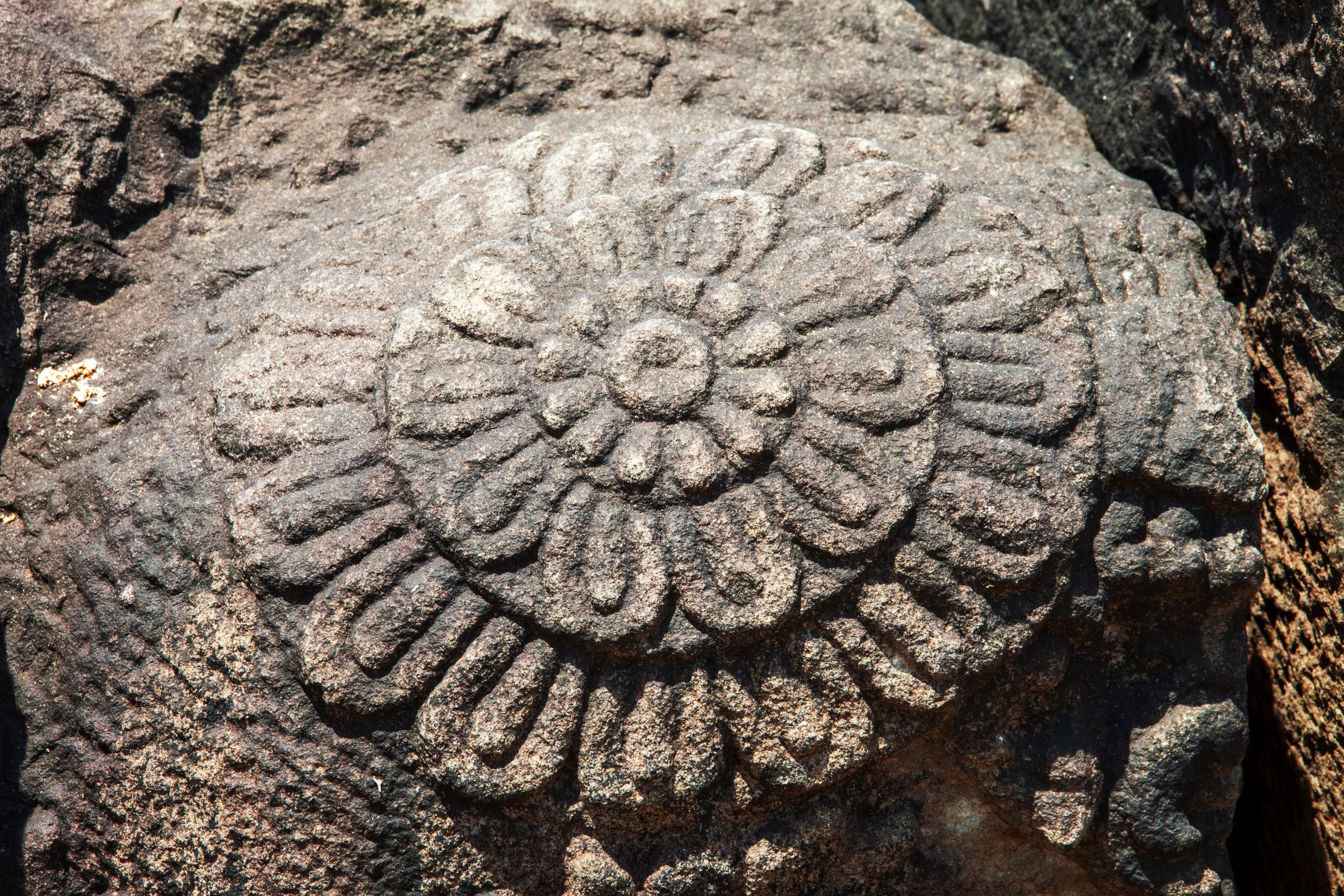Thai A
Lovers of history should visit Binh Dinh, a sunny coastal region full of ancient relics and tales of long-ago heroism.

Binh Dinh, a region known as the “Land of Literature and Martial Arts,” is commonly referred to as the “Land of Nẫu”, or “a sacred land with extraordinary people” by history lovers. This place harbors countless cultural relics and serves as a destination for those seeking the charms of the past. Lying against the Truong Son range, facing the East Sea, this region’s historical sites seem to whisper tales of ancient times.
Prior to the 14th century, this province was part of the Champa Kingdom, a civilization that originated in the 2nd century and was contemporaneous with the Dong Son culture. The residents here were skilled seafarers, lovers of song and dance, and heavily influenced by Indian culture. This led to the formation of once-glorious capitals like Panduranga, Kauthara, Indrapura, and Vijaya, etc., now located in Tra Kieu village in Duy Xuyen – Quang Nam, Nha Trang in Khanh Hoa, and Binh Dinh. Political and military fluctuations greatly affected the prosperity and decline of this sunny and windy region.
Today, before our eyes, it is a place filled with majestic relics. Each wall, tower, and engraved pattern on these monuments bears the distinct imprints of intersecting cultural and religious beliefs. Furthermore, Binh Dinh is the cradle of the Tay Son movement, a dynasty that flared up in history like a glorious torch, during a period that makes every Vietnamese person proud, since the country was unified, and enjoyed independent sovereignty after more than a hundred years of division.
Throughout many ups and downs of history, Binh Dinh has retained numerous architectural works and relics that evoke memories of ancient and heroic times. When visiting, as they enjoy refreshing breezes off the East Sea, tourists should not miss the Banh It Towers, the Twin Towers, and the Duong Long Towers. These religious architectural marvels date from the ancient kingdom of Champa. Even as everything changes, these towers, aged by countless moons, remain a vivid testament to the mysterious craftsmanship of the ancients, which gave rise to architectural masterpieces emblematic of Champa culture.

Unlike the towers in My Son Sanctuary, the relic complex of Dong Duong (Indrapura), and the Lion Citadel (Simhapura), which are primarily made of bricks, the ancient towers in Binh Dinh are constructed from a combination of stone and brick. This brings to mind the architecture of Angkor Wat in Cambodia and scattered temples throughout present-day India. The techniques that ancient peoples used to transport large stones from far away, carve them, and stack them layer by layer in such a way that they have stood for centuries without adhesives, remain a mystery. The most beautiful and majestic complex is the Duong Long Tower cluster, a set of three aligned towers that are the tallest in Vietnam. They are impressively grand and glorious, particularly capturing viewers’ attention with the stone motifs on top of the brick-built towers. Familiar stone carvings include flowering vines, fire images, and the wheel of life, symbols of Hinduism scattered across South Asia that spread to the shores of the Pacific Ocean.
At the base of the Duong Long and Banh It towers, not many artifacts remain. However, in Binh Dinh Museum, we can closely examine motifs that bear the imprints of an ancient culture. Private collections also hold pieces of spiritual significance, such as statues of the holy bull Nandi and Kalamukha demon faces. The daisy symbol, representing the origin of life, and bas-relief carvings of goddesses like Sarasvati and Mahishasurmadini, who was born to exterminate demons, the eagle-like divine bird Garuda, and the Nagar serpent, perhaps carved by royal artisans, still exist to remind later generations of a civilization that once flourished in this land.
There are few physical remnants of the Tay Son dynasty. All that’s left are the foundations of Hoang De Citadel (Emperor Citadel), now located in the town of An Nhon, Binh Dinh. In the Quang Trung Museum, one can admire models of warships, ancient weapons, royal edicts, and ancient money, all of which help us to imagine the glorious but fleeting Tay Son era. Such is the nature of history, whether resplendent or dark, that it eventually flows on with the current of time, leaving behind only traces for later generations to gaze upon and ponder.










